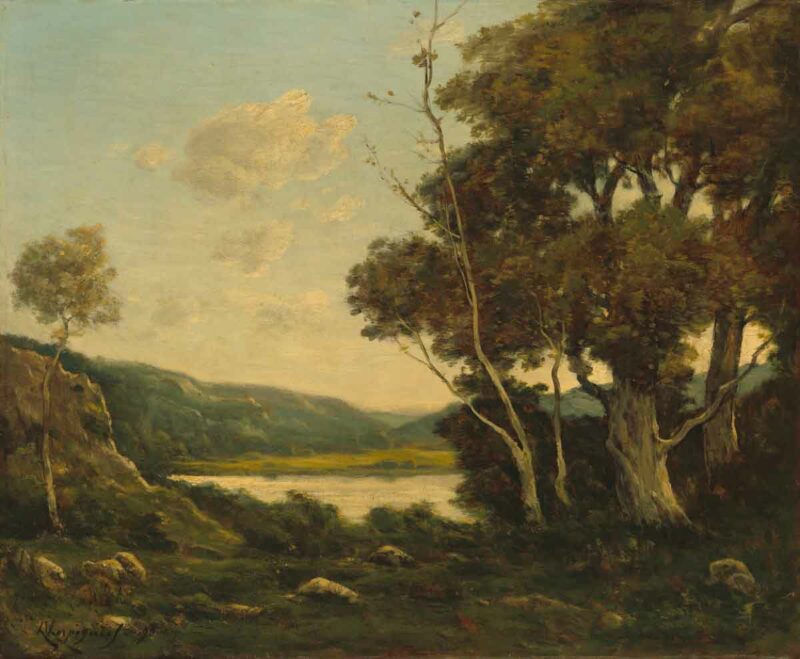Traces of Ancient Genocide And Remigration
In the news this week, an ancient population dies out, according to research about a vanishing tribe in Colombia:
People coming from the north settled South America. The first hunter-gatherers entered the continent from the region of what is Colombia today and then spread out from there.
These early settlers of the high plains around Bogotá, the Altiplano, have been dated back to 6,000 years ago. They represent a population that has yet to be described. They disappeared 2,000 years ago at the latest and were replaced by a second migration from Central America.
What surprised the researchers was that the genetic material of these people disappeared completely and can no longer be detected in individuals from the region who are around 2,000 years old. Krettek explains, “We couldn’t find descendants of these early hunter-gatherers of the Colombian high plains—the genes were not passed on. That means in the area around Bogotá there was a complete exchange of the population.”
Where did they go? The scientists do not conjecture, but since the region remains occupied, it is unlikely to be natural disaster or failure of crops. Most likely, they were replaced by another group that killed them because no genetic traces of them remain.
At this point, there is scientific dispute over whether the New World was peopled in waves, but the bigger pattern may be that waves moved from Canada to Argentina over time, as if they were exhausting territory up north or fleeing the cold.
One of these groups could have easily killed another. Or that ancient group may have, like the Maya, used another group as its serfs, and had them rise up and kill it off. Or the first group might have made a thriving society, invited others in, and been displaced or killed by them.
It is possible after all that in some remote corner of Central or South America this original group fled to become a minority, like Mennonites or Gulla, who live alongside others with a dozen miles of farmland separating them for thousands of years. Strong identity allows that.
As others pointed out, complete genetic disappearance is anomalous to the point that we have to think an exceptional event occurred:
“That genetic traces of the original population disappear completely is unusual, especially in South America,” says geneticist Andrea Casas-Vargas, from the National University of Colombia.
What happened to this newly discovered group, established 6,000 years ago, is something the researchers don’t speculate on – though the usual causes of conflict or disease may be responsible. It’s something future studies could look into.
“Conflict” seems to imply war and genocide. If disease killed them, it would be very odd for another group to move into their places. More likely it was one of the two great killers of civilizations: class revolt or diversity, or even both like clobbered the Maya.
For background, Amerinds are Mongolian but it seems those groups also Hoovered up European and Semitic DNA on their way into the Americas:
In summary, our conclusions are: 1) North West Canadian Athabaskans have had gene flow with: a) close neighboring populations, b) Amerindians, c) Pacific Islanders including East Australians and d) Siberians; 2) Beringia was probably not the only entrance of people to America: Pacific Ocean boat trips may have contributed to the HLA genetic American profile (or the opposite could also be true); 3) Amerindians entrance to America may have been different to that of Athabaskans and Eskimos and Amerindians may have been in their lands long before Athabaskans and Eskimos because they present and altogether different set of HLA-DRB1 allele frequencies; 4) Amerindians show very few “particular alleles”, almost all are shared with other Amerindians, Athabaskans and Pacific Islanders, including East Australians and Siberians; 5) Our results do not support the three waves model of American peopling, but another model where the people entrance is not only Beringia, but also Pacific Coast. Reverse migration (America to Asia) is not discarded and different movements of people in either direction in different times are supported by the Athabaskan population admixture with Asian-Pacific population and with Amerindians, 6) HLA variability is more common than allele veriability in Amerindians.
The core of the group seems to come from the Altai in Siberia but this group moved there from Mongolia and probably northern China. This happened after admixture with modern humans, who may have come from the Eurosiberian steppes.
Over time, this group branched, settling in Beringia and from there going to the New World to become Amerinds:
Whether by walking a land bridge or traveling by boat, hunter-gatherers ventured out from eastern Eurasia some 20,000 to 30,000 years ago to become the first Americans. But the intercontinental journey wasn’t a one-way trip. Several times in history, genetic studies show, Native Americans returned across the Bering Strait to Eurasia—long before Europeans began arriving in distant parts of the Americas.
Analysis of the DNA from those ten individuals provided several key revelations about ancient migrations. First, the broad movements of ancient humans and cultures across Eurasia are evidenced by the discovery of an entirely new population that lived in Siberia’s Altai Mountains. That culture’s descendants, the authors show, were part of lineages that later helped populate both Europe and the Americas. Secondly, individuals of Japan’s Jomon culture, isolated in the archipelago for thousands of years, migrated back to the Asian mainland from which their ancestors came. And finally, Native Americans migrated back into Asia several times over a span of thousands of years.
Interestingly, as some studies point out, Amerinds were admixed with Eurasian and middle eastern people:
Nearly one-third of Native American genes come from west Eurasian people linked to the Middle East and Europe, rather than entirely from East Asians as previously thought, according to a newly sequenced genome.
Prevailing theories suggest that Native Americans are descended from a group of East Asians who crossed the Bering Sea via a land bridge perhaps 16,500 years ago, though some sites may evidence an earlier arrival.
“This study changes this idea because it shows that a significant minority of Native American ancestry actually derives not from East Asia but from a people related to present-day western Eurasians,” Willerslev said.
These likely came in first and were absorbed, or were absorbed from the remnants of Yamnaya and Fertile Crescent expansion. Interestingly enough, there was remigration leading to genetic backflow into Siberia and Mongolia:
Our autosomal, Y-chromosomal and mitochondrial DNA analyses reveal that whereas few specimens seem to be related matrilineally or patrilineally, nearly all subjects belong to haplogroup R1a1-M17 which is thought to mark the eastward migration of the early Indo-Europeans. Our results also confirm that at the Bronze and Iron Ages, south Siberia was a region of overwhelmingly predominant European settlement, suggesting an eastward migration of Kurgan people across the Russo-Kazakh steppe. Finally, our data indicate that at the Bronze and Iron Age timeframe, south Siberians were blue (or green)-eyed, fair-skinned and light-haired people and that they might have played a role in the early development of the Tarim Basin civilization.
Some evidence points to miscegenation in Beringia, suggesting a backflow of European populations from the New World:
Here we describe more genetic diversity within the founder population than was previously reported. The newly resolved phylogenetic structure suggests that ancestors of Native Americans paused when they reached Beringia, during which time New World founder lineages differentiated from their Asian sister-clades. This pause in movement was followed by a swift migration southward that distributed the founder types all the way to South America. The data also suggest more recent bi-directional gene flow between Siberia and the North American Arctic.
It seems that some admixture from what is now Turkey made it into southern Mongolia, incorporating European traits, but northern Siberians remained closer to their Asian roots:
Based on these data, we noted differences in the origin and population history of Altaian ethnic groups, with northern Altaians appearing more like Yeniseian, Ugric, and Samoyedic speakers to the north, and southern Altaians having greater affinities to other Turkic speaking populations of southern Siberia and Central Asia. Moreover, high-resolution analysis of Y chromosome haplogroup Q has allowed us to reshape the phylogeny of this branch, making connections between populations of the New World and Old World more apparent and demonstrating that southern Altaians and Native Americans share a recent common ancestor.
It turns out that these groups came across and separated according to latitude, with the original group staying to the north and its mixed population, possibly serfs or slaves, escaping to the south:
The Native American populations have lower genetic diversity and greater differentiation than populations from other continental regions. We observe gradients both of decreasing genetic diversity as a function of geographic distance from the Bering Strait and of decreasing genetic similarity to Siberians — signals of the southward dispersal of human populations from the northwestern tip of the Americas.
One way to measure the Mongolian influence in the Altai is to look at the creatures they brought with them, which we can see in horses which in Siberia resemble their Mongolian forebears:
While studying modern horses from two Altai regions, where horses were subjected to less crossbreeding, we tested the hypothesis, formulated on the basis of morphological data, that the Altai horse is represented by two populations (Eastern and Southern) and that the Mongolian horse has a greater genetic proximity to Eastern Altai horses. Bone samples of ancient horses from different cultures of Altai were investigated to clarify the genetic history of this horse breed. As a genetic marker, we chose hypervariable region I of mitochondrial DNA. The results of the performed phylogenetic and population genetic analyses of our and previously published data confirmed the hypothesis stated above. As we found out, almost all the haplotypes of the ancient domesticated horses of Altai are widespread among modern Altai horses.
As we have riffed on here before, it is likely that a population expansion of Europeans mixed with Denisovans and other groups, creating hybrids of modern humans, Neanderthals, and Denisovans in the Mongolia-Altai area:
The fossil record suggests that at least two major human dispersals occurred across the Eurasian steppe during the Late Pleistocene. Neanderthals and Modern Humans moved eastward into Central Asia, a region intermittently occupied by the enigmatic Denisovans. Genetic data indicates that the Denisovans interbred with Neanderthals near the Altai Mountains (South Siberia) but where and when they met H. sapiens is yet to be determined. Here we present archaeological evidence that document the timing and environmental context of a third long-distance population movement in Central Asia, during a temperate climatic event around 45,000 years ago. The early occurrence of the Initial Upper Palaeolithic, a techno-complex whose sudden appearance coincides with the first occurrence of H. sapiens in the Eurasian steppes, establishes an essential archaeological link between the Siberian Altai and Northwestern China.
As we have seen with more recent hybrids, the mixture of Caucasian and Asian produced dark-complected people with large facial features, similar to Amerinds today.
Remigration of these New World hybrids back into Asia may have brought waves of Caucasian and middle eastern genetics. Most likely, smaller groups of Europeans in America, as well as ancient Japanese and middle easterners, were absorbed by the more numerous Mongolians.
Somewhere in here, genocides occurred, or at least groups vanished completely and rapidly. In any case, the “indigenous” in the Americas are immigrants like anyone else, and their mixed-race nature explains the disorganized nature of their culture outside of the great empires that declined millennia ago.
Since remigration of Amerinds has been ongoing in Asia for thousands of years, it makes sense to see the process of repatriation of Mongol-descended peoples as natural, since those who colonized first according to the genetic record now control the land there.
Tags: altai, amerinds, first nations, hbd, hispanics, indigenous, mongolia, native americans










